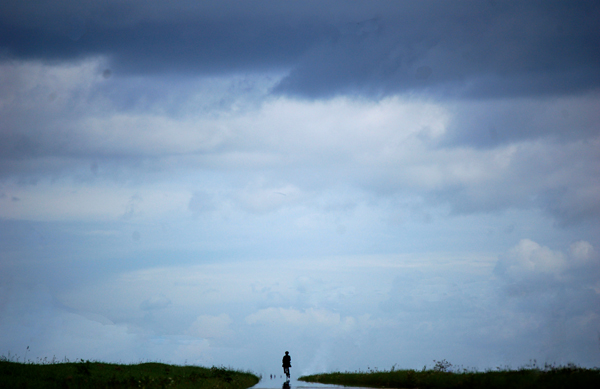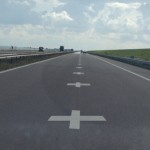Been working on a presentation today to send to Rijkswaterstaat, the governmental agency that looks…
De Afsluitdijk – Cornelis Lely’s dream
Did some more research about Afsluitdijk. The following is a chapter from Zoden aan de dijk, page 86 – 87 (my translation)
On May 28th 1932 the last opening in the Afsluitdijk was closed. The Zuiderzee became IJsselmeer – sea became lake. This dike, connecting the provinces of North Holland and Friesland, fulfilled the dream of engineer Cornelis Lely. The dream was to end the floods that struck the Zuiderzee area again and again, gaining arable land in the process. He himself did not live to see his work completed, for he died in 1929 after a productive life as a waterworks engineer and politician.
Cornelis Lely studied civil engineering, gaining his degree in Delft in 1875. In 1866 he became a member of the Zuiderzee association, a group of people concerned with enclosing the Zuiderzee. Several engineers made plans for this enclosing and the poldering associated with it. Lely’s plan, that was for a large part carried out later, was drawn up in 1891. There was a lot of opposition to the plans. Fishermen feared for their profession, politician were afraid of the costs and the experts disagreed about each other’s ideas.
Lely was a very tenacious man. In 1891 he became minister for Waterworks, Commerce and Industry. The time was, however, not ripe for carrying out his plans. In 1913 he became a minister for the third time. And at last he was able to put his plan on the political agenda. Lely responded to the feeling in society that a national and emblematic project was needed. Even so, such an expensive undertaking was not agreed upon at once. Only after the flood of 1916 doing much damage around the Zuiderzee, and the near-famine of 1918 showing the need for more arable land, was the plan taken up. In 1927 the building of the Afsluitdijk was started. The Wieringermeer polder was started as well, it dried out in 1930.
When the Zuiderzee was closed off, new poldering became possible. First the Noordoostpolder, then Eastern Flevoland and Southern Flevoland. These three later became the new province of Flevoland. This new land was given out to farmers, new towns, villages and cities were built, new opportunities for nature and recreation were created.
The Afsluitdijk these days merits a thorough renovation. The capacity of its sluices, meant to let out the extra water from rain and river, is no longer sufficient. The dike is wearing out, so the body of the dike will have to be reinforced. Eventually the dike must be heightened because the level of the sea is rising. A number of solutions are being studied today. The IJsselmeer, having become an enormous reservoir of fresh water, plays an important role in present thinking about a climate-change-resistant Netherlands. The Voerman committee, in its 2008 advice, suggested raising in waterlevel in the IJsselmeer in order to enlarge the fresh water buffer for the northern and western parts of the country.
On August 15th 2006 yet another dream was fulfilled. Rijkswaterstaat [government agency looking after sea and river defence] gave formula-1 driver Robert Doornbos a chance to do what he had been after for a long time. On a part of afsluitdijk closed for traffic for the occasion he drove his racing car and achieved a speed of 326 km an hour. 
| « Crossed | <-- previous post | next post --> | Immersed perception » |
|---|









